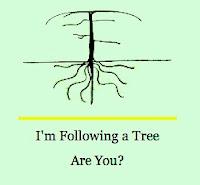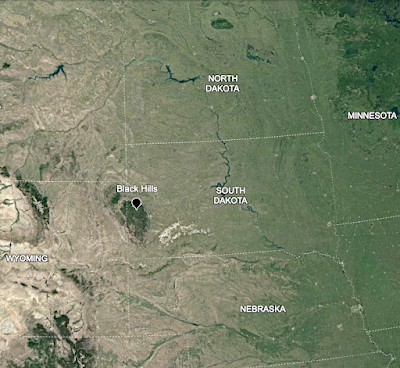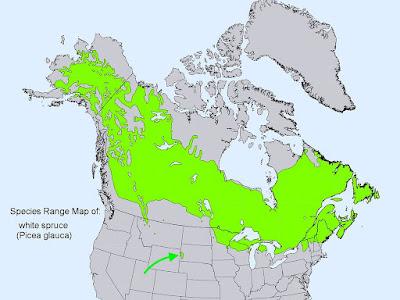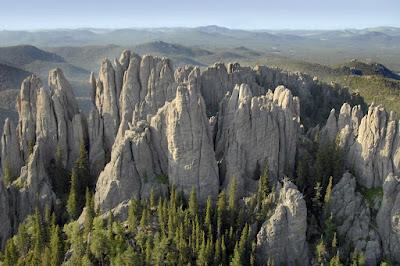
Black Hills Spruce in the Cathedral Spires high in the Black Hills (State of South Dakota photo).
It's time for a January tree-following report but I've given no thought whatsoever to a tree for 2024. However I'm thinking a lot about trees for an online guide to South Dakota plants, hosted by the Rocky Mountain Herbarium at the University of Wyoming (a guide to Wyoming plants is also underway). Being keen to learn more about my arborescent friends, I decided to feature a different tree each month. Like our online guide, the posts will be photo-rich!I'm starting with the Black Hills Spruce—South Dakota's State Tree. This spruce and the Ponderosa Pine are what make the Black Hills black.
The Black Hills stand out against the surrounding prairie thanks to coniferous forests. Google Earth; no date.
The scientific name for Black Hills Spruce is Picea glauca. Some readers, for example in Wisconsin and Minnesota, are now thinking "Whaaatt??!" Yes, you're right. P. glauca grows in your states as well as across Canada and beyond. Outside the Black Hills it's called White Spruce.Native distribution of P. glauca. The disjunct green spot in western South Dakota is the Black Hills. USDA Plants Database; TreeLibrary photo (arrow added).
There was a time when Black Hills Spruce was recognized as P. glauca var. densata for its tendency toward denseness—denser stands, denser darker needles, and more compact growth form compared with White Spruce elsewhere. But these differences are subtle and not consistent. So the botanical variety was abandoned in the early 1970s. However 'Densata' remains a popular cultivar.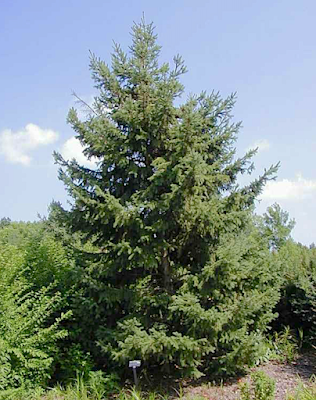
P. glauca 'Densata'. Black Hills Spruce is considered a superior ornamental tree. Source.
Are you wondering why a taxonomically-controversial tree native only in the far western part of South Dakota is the state tree? Well ... South Dakotans have wondered too. In fact the Black Hills Spruce was hardly a shoo-in for State Tree, for the reasons mentioned above. There was a lot of support for the cottonwood, which grows widely across the state. Others favored junipers, more often called cedars. A committee looked into both but decided to go with the Black Hills Spruce. It was designated State Tree in March of 1947. More here.Of course I will include the State Tree story on the Spruce's webpage, but mainly we want to help users with identification. In this case, id is easy. There are only six coniferous tree species in South Dakota. Of these Picea glauca is the only one that has solitary needles. Our other coniferous trees with needles—the pines—have them in bundles of 2–5. Common Juniper, Juniperus communis var. depressa, has solitary needles but is clearly a shrub not a tree. (Outside North America Common Junipers are often trees, as I learned from Erika in Sweden.)
For a detailed "description" of White Spruce, see the photographs below. We are so fortunate to have many great photos available for educational and non-commercial use. I don't miss the "good old days" of hefty technical manuals, nor trying to describe plants and their parts with words only.
Unless noted otherwise, photos below are from the wonderful Minnesota Wildflowers Information web site (includes all Minnesota plants now, not just wildflowers). It's a major source of information and photos for our project.
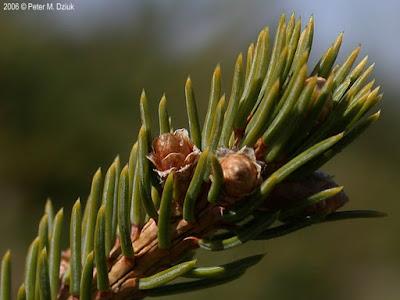
Spruce needles are solitary with no sheath at the base. Needles of P. glauca are about 2 cm long and often closely spiraled on the branch. Brown structures are buds—the beginnings of young shoots.
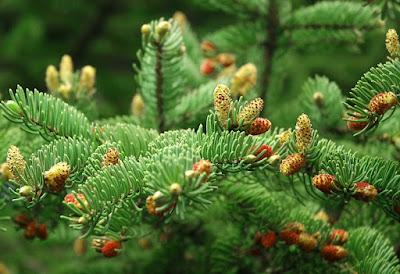
In spruce, pollen and seeds are produced in different cones on the same tree. Male cones are smaller. These are P. glauca pollen cones in spring. TreeLibrary, Susan J. Meades.
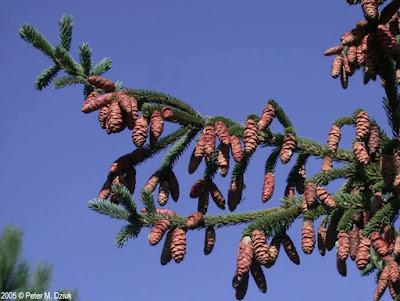
Mature P. glauca female cones are reddish- or purplish-brown and can be as long as 7 cm.
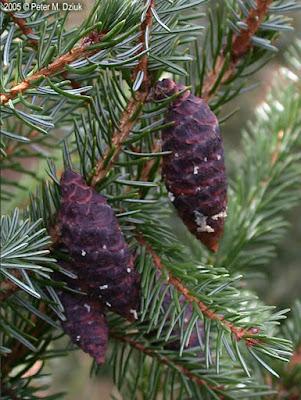
When immature, female cones are a beautiful purple!
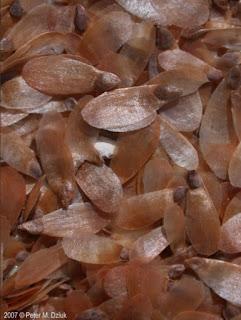
Winged seeds, ready to fly.
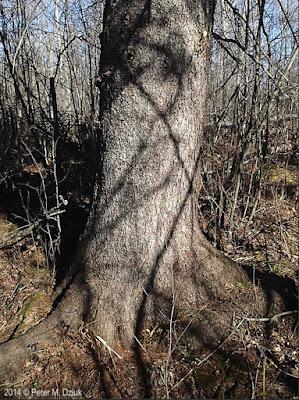
P. glauca bark is thin, gray, and scaly.
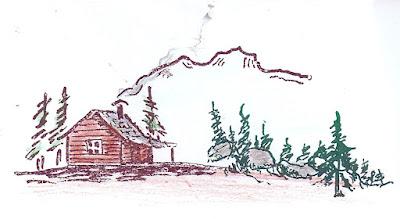
A cozy cabin among Black Hills Spruce. Rubber stamp art by Jan Conn.
This is my January 2024 contribution to the monthly gathering of tree followers kindly hosted by The Squirrelbasket. Consider joining us!
